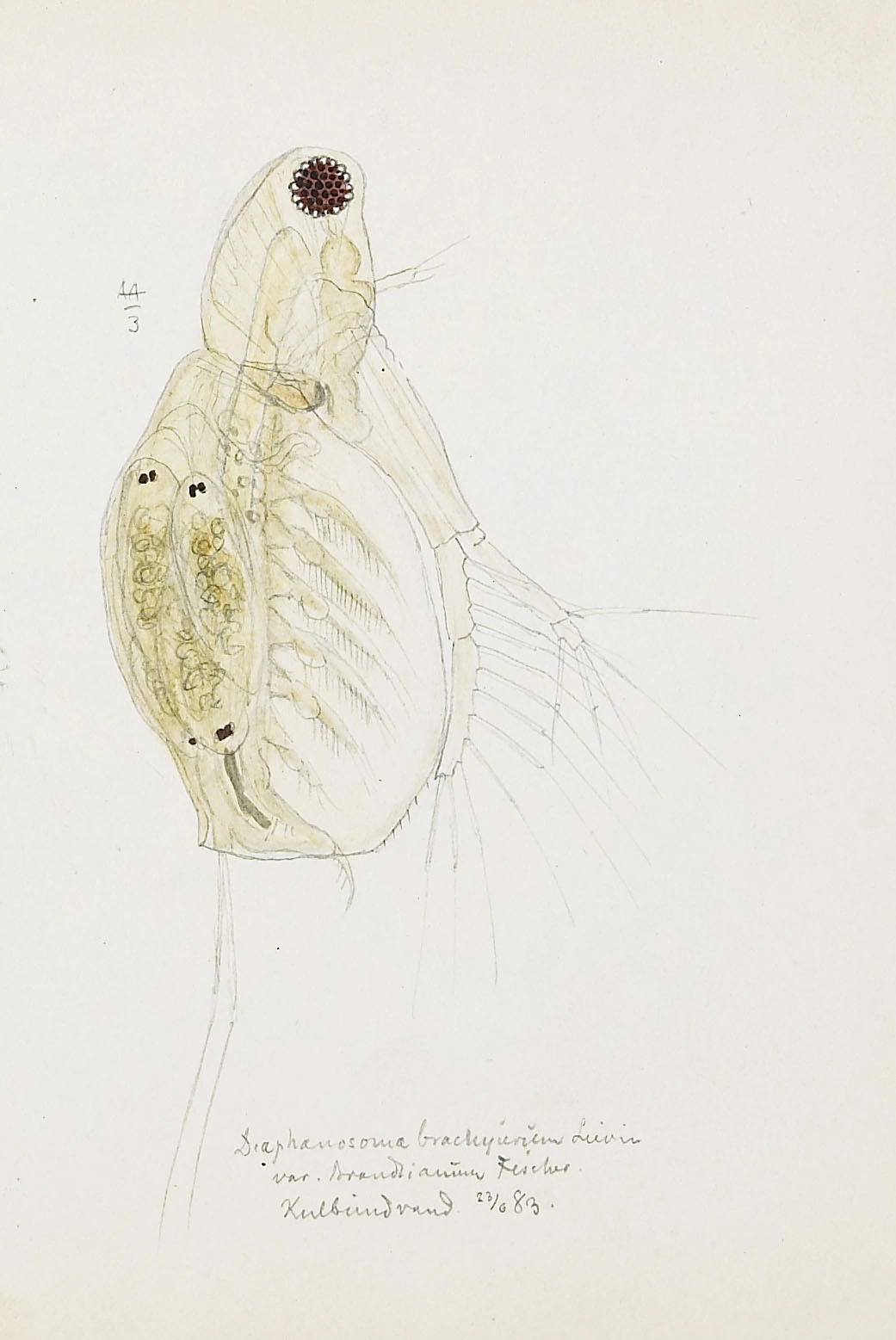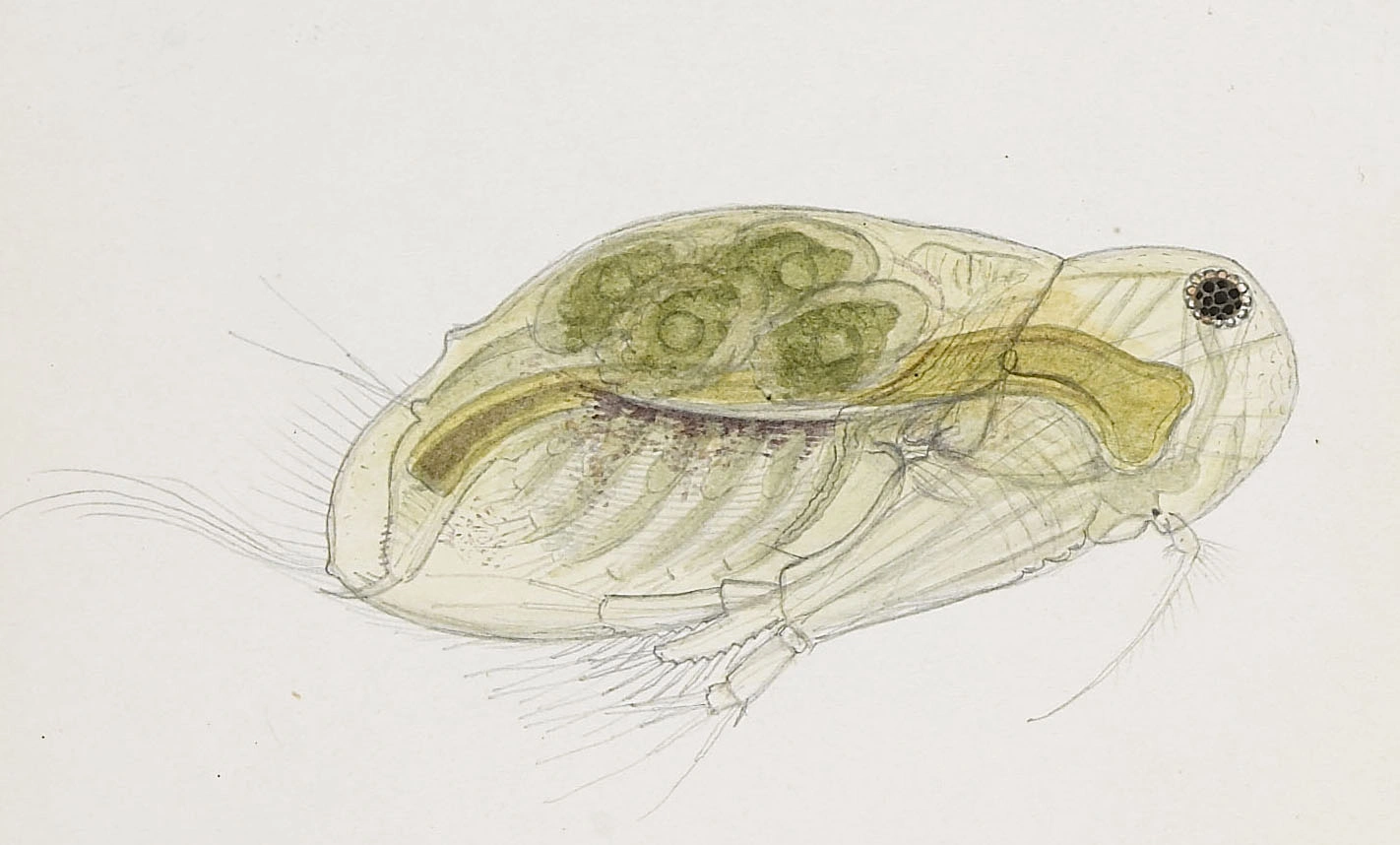Diaphanosoma brachyurum
Diaphanosoma brachyurum is a common species found in a variety of localicties always below 1000 m a.s.l. It has an oval form with long antennas, and with a head that makes up about one third out of the total body length.
Key characteristics
Diaphanosoma brachyurum (female)
Diaphanosoma brachyurum (male)
Diaphanosoma brachyurum has an oval form, and is about twice as long as broad. Its head makes up about one third out of the total body length. D. brachyurum belongs to a genus characterised by having no rostrum. A large compound eye is situated in the front of the head which is evenly rounded. The second pair of antennae are very long, reaching beyond the tip of the abdomen, and is equipped with bristles along almost the whole length of one margin. The postabdomen is small and slender and has three coarse denticles attached to the abdominal claw. The basal denticle is about half as long as the last one. It is almost hyaline or with a light yellow colour.
Female: Length 0.6–1.3 mm
Male: Length 0.6–0.9 mm
Ecology and distribution
D. brachyurum is a common species found in 30 % of the water bodies. Except for the mountain areas, it is widely distributed in South Norway. In North Norway it has a more scattered distribution. Between 300 and 500 m a.s.l. it occurs in 39 % of the water bodies while it is never found above 1000 m a.s.l. D. brachyurum is found in high frequencies in water bodies of all sizes. Though it occurs with especially high frequency when pH<4,5 (58 %), it is common all along the pH-gradient. Conductivity varies between 0.4 and 44 mS/m.
| Vitenskapelig navn | < 4,5 | 4,5 - 4,9 | 5,0 - 5,4 | 5,5 - 5,9 | 6,0 - 6,4 | 6,5 - 7,0 | 7,0 - 7,4 | > 7,5 |
|---|---|---|---|---|---|---|---|---|
| 58,5 | 39,1 | 28,6 | 39,2 | 34,2 | 26,3 | 20,4 | 21,3 |
| Vitenskapelig navn | < 1,0 | 1,0 - 1,4 | 1,5 - 1,9 | 2,0 - 2,9 | 3,0 - 3,9 | 4,0 - 4,9 | 5,0 - 6,9 | 7,0 - 9,9 | > 10,0 |
|---|---|---|---|---|---|---|---|---|---|
| 8,4 | 17,7 | 30,5 | 38,9 | 40 | 41,5 | 42,9 | 29,1 | 24,2 |
| Vitenskapelig navn | < 0,01 | 0,01 - 0,09 | 0,1 - 0,9 | 1,0 - 9,9 | 10,0 - 99 | 100 - 999 | > 1000 |
|---|---|---|---|---|---|---|---|
| 0 | 19,4 | 30,7 | 37,4 | 29,7 | 28 | 29,1 |
| Vitenskapelig navn | < 100 | 100-299 | 300-499 | 500-699 | 700-999 | >1000 |
|---|---|---|---|---|---|---|
| 39,3 | 46,6 | 29,6 | 22,9 | 12,8 | 0 |
Look-alikes
Latona setifera


